
The 1930s-built Foyer du Soldat et du Marin in the late colonial period
This article was published previously in Saigoneer http://saigoneer.com
Originally founded in the 1890s by General Théophile Pennequin (1849-1916), Commandant supérieur des troupes de l’Indo-Chine, the Foyer du Soldat et du Marin (Soldiers and Sailors Club) was initially known variously as the Cercle or Maison des Soldats et Marins.
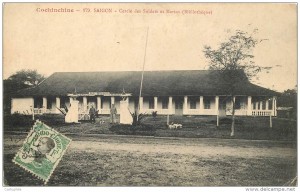
The Library and Salon de Lecture of the original Maison des Soldats et des Marins, set up in the 1890s
It was located from the outset at its current site, in front of the main 11th Colonial Infantry Barracks on boulevard Norodom (modern Lê Duẩn), which a 1906 Saigon visitors’ guidebook (Saïgon-Souvenir, petit guide saigonnais à l’usage des passagers des débutants dans la colonie) calls “the most beautiful military barracks in the entire world.”
The same guidebook describes the facilities of the Cercle des Soldats et Marins as “a lovely building which serves as a meeting and reading room with a library containing 1,500 volumes.” It continues: “At certain times, a military theatre company gives evening performances in a special room and a café run by the Cercle sells food and drinks at deeply discounted prices.”
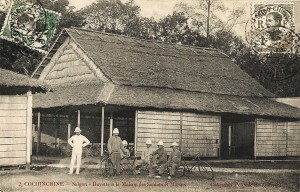
The Café of the original Maison des Soldats et des Marins, set up in the 1890s
“All this gives the military the means to entertain themselves without leaving the neighbourhood, and especially without large expenditure. If one mentions also the games of all kinds installed in the garden of the Cercle and the exciting sporting events held here, we think, with good reason, that the French soldier, in comparison with the soldiers of other nations, is much better served in every respect.”
However, the Cercle seems to have operated on a very limited budget until 1910, when the Colonial Council, recognising that it “has very few resources and needs to be supported and encouraged,” granted it an annual subvention of 200 Francs in order that “our humble soldiers and sailors, away from their families and homeland, find themselves a range of varied and healthy distractions.”
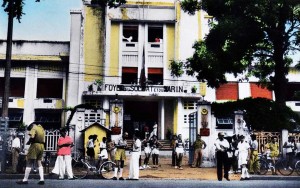
Another late colonial period shot of the 1930s-built Foyer du Soldat et du Marin
In subsequent years, the Cercle became a popular venue for a wide variety of functions, including shooting contests, flower shows, automobile exhibitions and cinematographic exhibitions.
The building was reconstructed in its present art deco-inspired form in 1936-1937 to a design by Louis Chauchon (1878-1945), who also designed the Clinique Saint-Paul, and entrusted to the administration of the newly-established Fédération du Foyer du Soldat et du Marin. The facilities of the rebuilt Foyer du Soldat et du Marin included a bar, a library, a small stage and outdoor sports facilities, including a swimming pool.
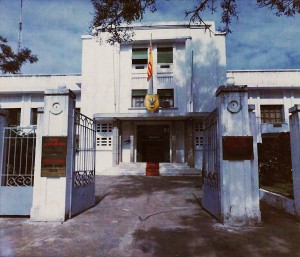
The National Defence College in 1972
After the departure of the French, the Foyer du Soldat et du Marin building became a clubhouse for members of President Ngô Đình Diệm’s elite Republican Guard.
Then in 1967, the building was transformed into the National Defence College (Trường Cao Đẳng Quốc Phòng), an elite school for the training of ARVN officers over the grade of Colonel.
Since 1986, the old Foyer du Soldat et du Marin building has functioned as the Hồ Chí Minh Campaign Museum, which documents the final stages of the war to liberate the South in 1973-1975.
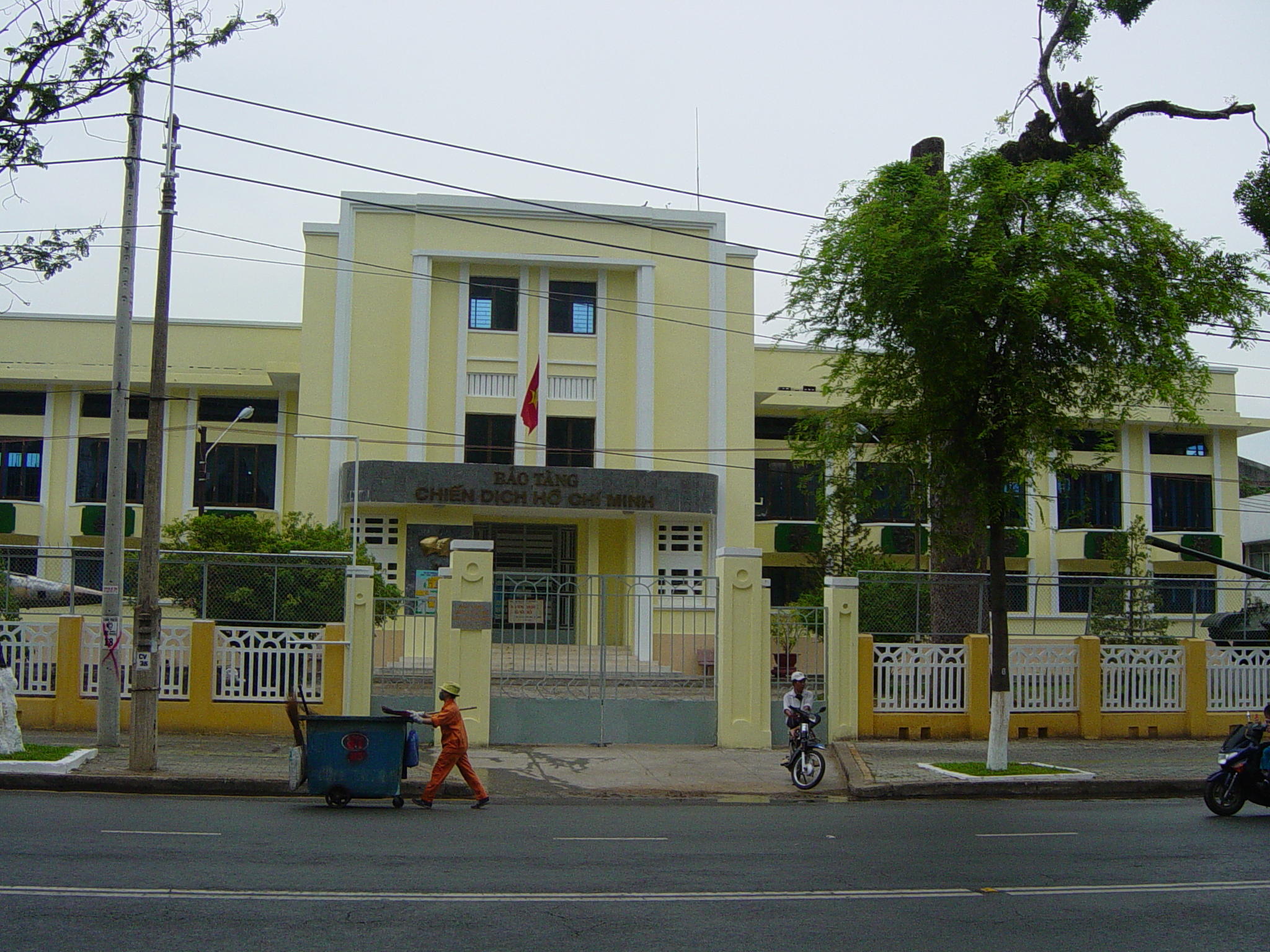
The Hồ Chí Minh Campaign Museum in 2003
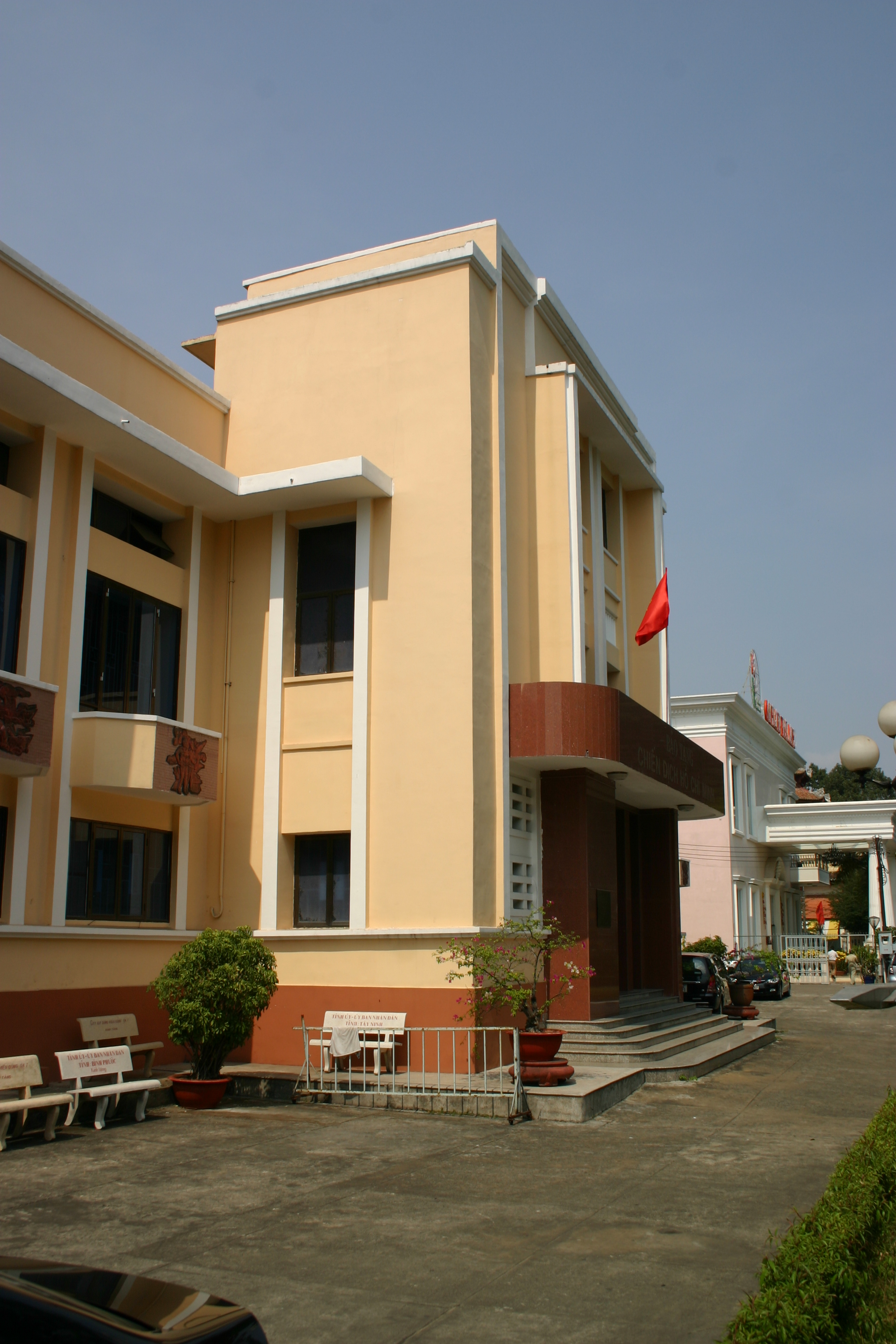
The Hồ Chí Minh Campaign Museum today
Tim Doling is the author of the guidebook Exploring Saigon-Chợ Lớn – Vanishing heritage of Hồ Chí Minh City (Nhà Xuất Bản Thế Giới, Hà Nội, 2019)
A full index of all Tim’s blog articles since November 2013 is now available here.
Join the Facebook group pages Saigon-Chợ Lớn Then & Now to see historic photographs juxtaposed with new ones taken in the same locations, and Đài Quan sát Di sản Sài Gòn – Saigon Heritage Observatory for up-to-date information on conservation issues in Saigon and Chợ Lớn.

